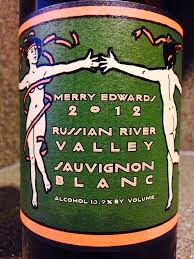The other day while edging through the checkout counter at a local retail store, I noticed the woman in front of me had purchased six bottles of wine, the total price of which cost her less than the one bottle I was buying. I’m not passing judgment on the quality of that wine, but what it does dramatize is the modern day egalitarian aspects of wine. It’s widely available, is obtainable at various price and quality levels, and the variety and abundance of international offerings seemingly should satisfy all palates. In a word, wine has been democratized. It has, however, not always been the case.
In ancient Rome, it seems that, even though wine was widely available, men routinely tried to restrict women’s access to it. Toga-clad politicians, who regularly enjoyed their male-only Convivium, the Roman version of Greece’s Symposia, observed at other events that women, after downing a goblet or two, occasionally became relaxed and somewhat flirtatious, even though not permitted to recline during dinner as their husbands did. Most certainly, as pawns in many political/matrimonial maneuvers, such outrageous behavior had to be carefully monitored and controlled. As Cicero, that clear thinking Roman statesman said, “Our ancestors, in their wisdom, considered that all women, because of their innate weakness, should be under the control of guardians.” You know who the guardians were.
In spite of those constraints, many freethinking, spirited Roman women planned and enjoyed their own wine drinking parties. Bacchanalia—party time revelry honoring the Roman wine deity Bacchus—was their female version of Convivium. It’s not clear if there were Chippendale-like dancers at those gatherings, however, there are indications that specially selected men were invited. One can only assume it was because of their contributions to the wine tasting discussions. “Good structure, good body, and speaking of that . . . .”
Fast forward five thousand years, and let’s navigate to Sonoma County California where I’m a semi-regular customer of a winery where the winemaker is a woman. She is also one of the first to break through the vinous glass ceiling of male winemakers. Her name is Merry Edwards, and she is the owner/entrepreneur of her eponymous named winery. Merry crafts premium quality Pinot Noirs and Sauvignon Blancs that are the favorites of professional wine journalists and seasoned wine enthusiasts alike.
Recently—even thought I had looked at it many times before—I was taken by the unique label design on her Sauvignon Blanc. It is a creative and mirthful interpretation of the nude Three Graces from Greek and Roman mythology, whose primary responsibilities included overseeing parties and similar joyous social events. I might be reading too much into it, but I believe the Graces are engaged in what can only be interpreted as a Bacchanalian dance. Given the above wild ride through history, is that cool, or what?



No comments:
Post a Comment